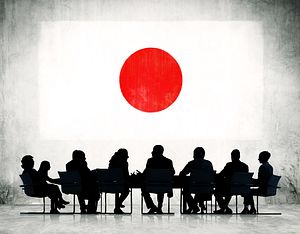Even as Prime Minister Shinzo Abe has made shaking up the structure of companies, and leadership in general, a key component of his new reform policy, two new items suggest this may be met with resistance in the private sector, and that the prime minister may have to take the lead within his own government. Abe has specifically said that he wants Japanese corporations to bring in outside opinions by increasing the number of outside directors sitting on their boards. Additionally, he wants women to comprise 30 percent of all leadership positions in Japanese society by 2020. These two planks of his economic agenda will almost certainly be met with resistance, at least at first.
The first aspect of this reform is encountering inertia. A survey by Nikkei found that the number of new presidents at Japanese companies fell 8.8 percent in the first six months through June this year. While this doesn’t specifically address new board members, it is indicative of a corporate culture that values continuity and resists outside influences. The survey also noted that while McDonald’s Holdings Japan grabbed attention this year by appointing Sarah Casanova as president, only six female presidents were appointed in Japan during the first six months of this year, the same as last year, and representing only 1 percent of all companies surveyed.
Abe has attempted to counter this trend, and he is rumored to be considering expanding the number of women in his Cabinet when it is reshuffled in September. With women holding only 40 of the LDP’s 410 Diet seats, he does not have a large pool to draw from. While he has appointed women to leadership positions and currently has two women in his Cabinet, few women in the Diet have served multiple terms. The Japan News reported that the head of the LDP’s Women’s Affairs Division, Junko Mihara, wants Abe to double the number of women in his Cabinet to four. However, there are 42 male members of the Diet’s lower house who have been elected to at least five terms, but have not yet served on the Cabinet. One male Cabinet member said that “Prime Minister Abe might get into trouble someday if he doesn’t make appointments based on candidates’ capabilities, irrespective of gender.”
These changes to the structure of Japanese leadership will be difficult. The issue has two parts that will need to be addressed simultaneously in order to be successfully resolved. The first is the issue of loyalty and group-think that still tends to dominate Japan’s corporate culture, and especially its boardrooms. The second will be to tap women to fill positions over the objections of those who dominate the public and private sectors of Japan’s leadership. Clearly, this change will be difficult. Abe’s own Cabinet reshuffle this September may offer clues as to how the process might begin.

































